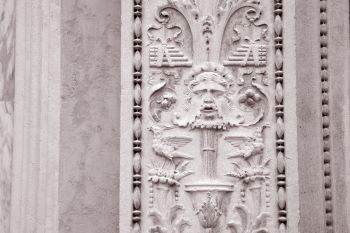



The San Zaccaria monastery was, along with the San Lorenzo monastery, the oldest and most important of the Venetian nunneries, where the rich Venetians placed their unmarried daughters. San Zaccaria was first mentioned in a document in the 9th century. In addition to the unusual architecture of the building – between Gothic and Renaissance – a painting by Giovanni Bellini, a painter of the early Renaissance, is particularly worth seeing. Many famous artists, both Venetian and non-Venetian, have contributed to the decoration of the church, including Tintoretto, Giandomenico Tiepolo and Giovanni Bellini.
The church of St. Zacharias consists of two adjacent buildings known as the ‘old church’ and the ‘new church’. The ‘old church’, located to the right of the ‘new church’, includes, above the crypt, the striking main chapel, built and decorated between 1440 and 1445 and now named after Saint Tarasio, the adjacent chapel known as the Chapel of Our Lady of Sorrows, and other rooms created between 1458 and 1463 and later modified.
A marble portal leads into the choir or chapel of St Athanasius. Once an altarpiece behind the nuns’ choir of the old church, the Birth of the Virgin by Jacopo Tintoretto stands out.
The Chapel of St. Tarasius, formerly the presbytery of the Gothic church, shows a particular combination: on the one hand, the high point of the Gothic style as represented in Venice, and on the other, an example of the style of the early Renaissance, which began in Florence.
The only remaining part of the oldest church is the crypt, which is located under the Chapel of St. Tarasius: it probably dates back to the beginning of the 10th century, is modest in size and divided into three small naves separated by columns with simple capitals.
The crypt itself is now unadorned and unfurnished, except for a marble altar crowned by a sculpture of the Madonna. The simple reason: the area is below mean sea level, so that water is present for most of the year. During high tides, the crypt is literally flooded. When the water level is lower, however, it is possible to enter the interior through an elevated walkway. If the water level permits, you can visit the crypt.

Clickhere
to see on google maps
Address:
Campo S. Zaccaria, 4693, 30122 Venezia VE
Your ticket for the museum and crypt of San Zaccaria is already included in your City Pass.
Free admission to Venice's museums, attractions, and tours. Free public transport can be added. Discounts included.

incl. VAT and service fees, free shipping via e-mail